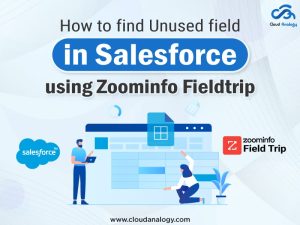Sharing is caring!
At Dreamforce, an annual four-day tech conference, Salesforce has announced that Process Builder and Workflow Rules will be discontinued. Salesforce users will have to focus more on Flows, recognized as the most powerful tool and the future of automation. With Salesforce Flows, you can create complex business processes without writing a single line of code.
Outbound messages are available to the users as a core action in Flow Builder. Outgoing messages are workflows approval actions that send information to an external server. Outbound messages in Salesforce is an immediate workflow action and transmit data to external servers in the form of Simple Object Access Protocol (SOAP).
To configure outgoing messages in Setup, you need to create an external storage area and assign a person to listen to messages using the SOAP API. So, let’s now discuss the steps to create an outbound message in Salesforce.
Steps To Create An Outbound Message In Salesforce
Step 1: From Setup, enter “Outbound Messages” in the Quick Find box.
Step 2: Click on the New Outbound Message
Step 3: Select an object from the Picklist
Step 4: Fill in all the required details such as Name, Unique Name, and Endpoint URL, and also select Available Field, if required.
Step 5: Click on the Save Button,
Endpoint URL:- The message will be sent to the recipient as per the terminus URL. Salesforce will send a SOAP message to this terminus.
Flows In Salesforce
In Salesforce, Flow is the limit used to collect data and perform actions in the Org. There are two types of Salesforce Flow: Screen flow & Automatic launch flow.
With Screen Flow, you can automate a business process that collects data from people. For example, you can build a guided tutorial or a wizard with screens. Comparatively, with Automatic launch flow, you can start the internal flow while recording or when the user clicks a button. For example, you can add a default setting to your page or app that acts as a record when a user clicks a button.
The three main “building blocks” of any Flow are as follows:
1. Elements are the individual building blocks of a flow that perform logical actions such as tasks, decisions, or loops.
2. Connectors define which element leads to which. Salesforce Winter ‘21 release enables Auto-Layout and automatically connects the Elements.
3. Resources are individual data variables that need to be used in a Flow – these can be strings of text, numbers, records, formulae, or collections.
Steps To Navigate To Flows
Step 1: Go to Setup and enter “Flows” in the Quick Find box.
Step 2: Select the Flows under Process Automation.
Step 3: Click the New Flow button.
To enable Outbound messages with Flows in Salesforce, we must select Record Triggered Flows. So, what are record-Triggered Flows? Read on to know.
What Are Record-Triggered Flows?
With record-triggered flows, you don’t have to write triggers in some specific scenarios, and therefore you can cater to complex business requirements without writing a single line of code. Record-enabled flow lets you update a Salesforce record ten times faster than the record conversion process.
In record-triggered flow, you can trigger the Flow in the below scenarios:
- A record is created
- A record is updated
- A record is created or updated
And you can run the Flow when:
- Before the record is saved
- After the record is saved
Steps To Send Outbound Message With Flows
Step 1: From Setup, enter “Flows” in the Quick Find box.
Step 2: Select the Flows under Process Automation.
Step 3: Click the New Flow button
Step 4: Select “Record-Triggered” Flow
Select 5: Select either Freeform or Auto-Layout
Select 6: Set the Trigger Criteria:
- Select the object
- Select the Trigger options as per the requirement.
- In Condition Requirement, Select the Condition Requirement
- And then Create the Condition
- After that, apply the Filter
- Click Done
Step 7: Click on the”+” button to add an element.
Step 8: Select the Action from the “Add Element”
Step 9: Click on the Outbound message from the Action.
Note:- Firstly, create an Outbound message, then develop Flows; otherwise, the Outbound message action is not visible in the Action list.
Step 10: Select the Outbound message that was created earlier.
Step 11: Select the Outbound message that was created earlier.
Step 12: Write the label of the Outbound Message
Step 13: Click Done
Step 14: Save the Flow and Activate it.
After activating the flow, we create an Opportunity with the Stage Close won. Every time the record is created or updated, an Outbound message is sent to an Endpoint URL
And it consists of all the fields we select while creating Outbound Messages. After that, we have to check Outbound messages in Monitoring.
And check that no item should be there for the delivery or not present in the Queue.
Final Wrap
In a nutshell, Flows are used to send outbound messages. Outbound Messages are available as an action in the Flow Builder to enable you to send messages to the end-point (External Service) in the form of XML (Extensible Markup Language). You can configure outbound messages from Setup. You must configure the external endpoint and create a message listener using SOAP API.
Flows help you send object field data to your third-party application to perform the specific task as required. You can send a SOAP message from a record-triggered flow to specified endpoints. For example, notify external services when a high-priority case is created.
Looking to hire a top-notch CRM development company to skyrocket your business revenue? Cloud Analogy builds custom-tailored CRM systems, implementing customized software functionalities & strategies that take the business to the next level. Reach out to the best CRM implementation company now!

Nitish Bhardwaj
Salesforce Principal Consultant | Chief Information Officer
An experienced Salesforce.com professional with 5+ years of experience in consulting on and delivering Salesforce projects for mid size, large and very large customers.Hire the best Salesforce Implementation Partner. Choose certified Salesforce Implementation Experts from Cloud Analogy now.










